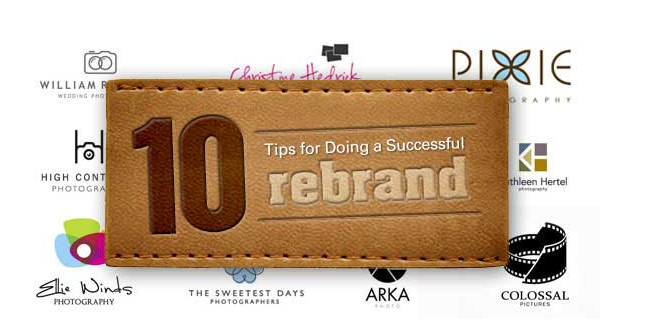|
Intro by Skip Cohen A short time ago I wrote a post about "jump-starting an older business". Well, I ran across this terrific post on the Photodex blog and was given permission to share it with you here. It's all thanks to "Leslie" at Photodex that you're about to read some outstanding ideas to help rebrand your business, but there's one major point you need to remember. Your brand isn't just your logo - it's the personality, the heart and soul, of your business. At the very core of changing your brand needs to be thoughts about what your brand stands for! I'm turning it over to Leslie, who's about to give you some outstanding food for thought! Note: Leslie Hargenrader is the Creative Services Manager at Photodex and their lead designer. She's doing some amazing things at Photodex and strongly believes in support of the professional photographic community. If you’re thinking about a rebrand —chances are good that you’re looking for a change in how your business (or product) is performing. The whole purpose of a rebrand is to achieve a specific business objective by altering the perceptions of your company or product. To do so, you must address the individual elements that make up the brand’s identity, controlling how it looks and feels to the world.
Why rebrand? A successful rebrand has many benefits. Not only should it help you stand apart from your competition, it should also make it easier to attract new customers who may not have considered your offerings before. It can also help certain problem areas, like closing the disparity between what you think you should be able to charge, vs. what customers think your services are worth. A rebrand is not the solution to everything but it has the potential to breathe life and energy into a stale or uninspired business rut. Rebrands vary in scope. For some companies, a rebrand involves a somewhat minor, cosmetic makeover of identity elements, such as logo, tagline, and brand color(s). In other cases, the rebrand is major and part of a bigger fundamental shift in a company’s ideology and direction. The rebrand may influence product design, production practices, customer policies and marketing strategy. No matter how big or small the change is that you seek, a successful rebrand involves two things: 1) Making informed choices for your rebrand based on research & experience (not just gut feelings & emotions) 2) Consistent implementation of your new brand elements. Here are 10 tips to keep your rebrand on track and implemented successfully:
0 Comments
Your comment will be posted after it is approved.
Leave a Reply. |
Archives
November 2016
|
© 2019 Skip Cohen University


 RSS Feed
RSS Feed